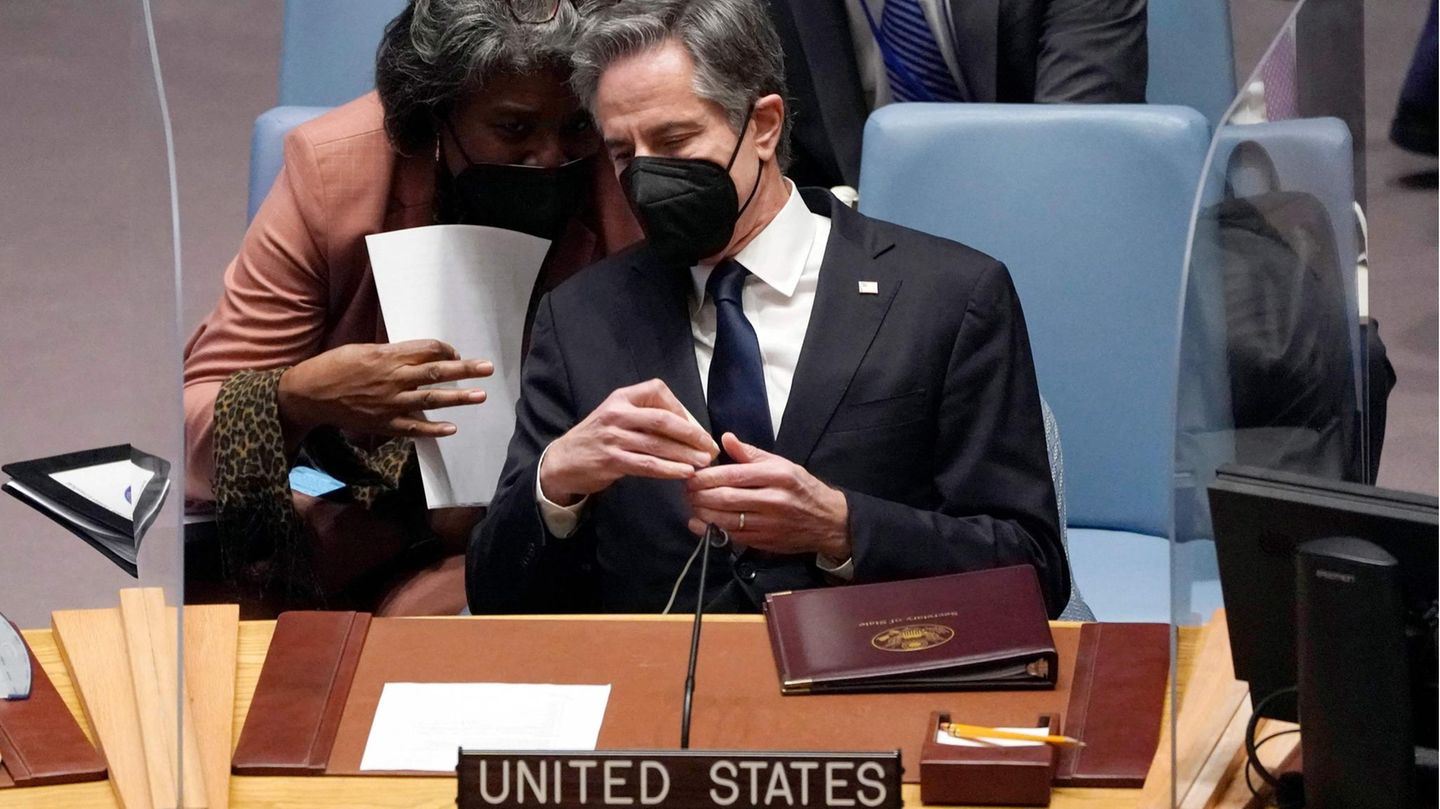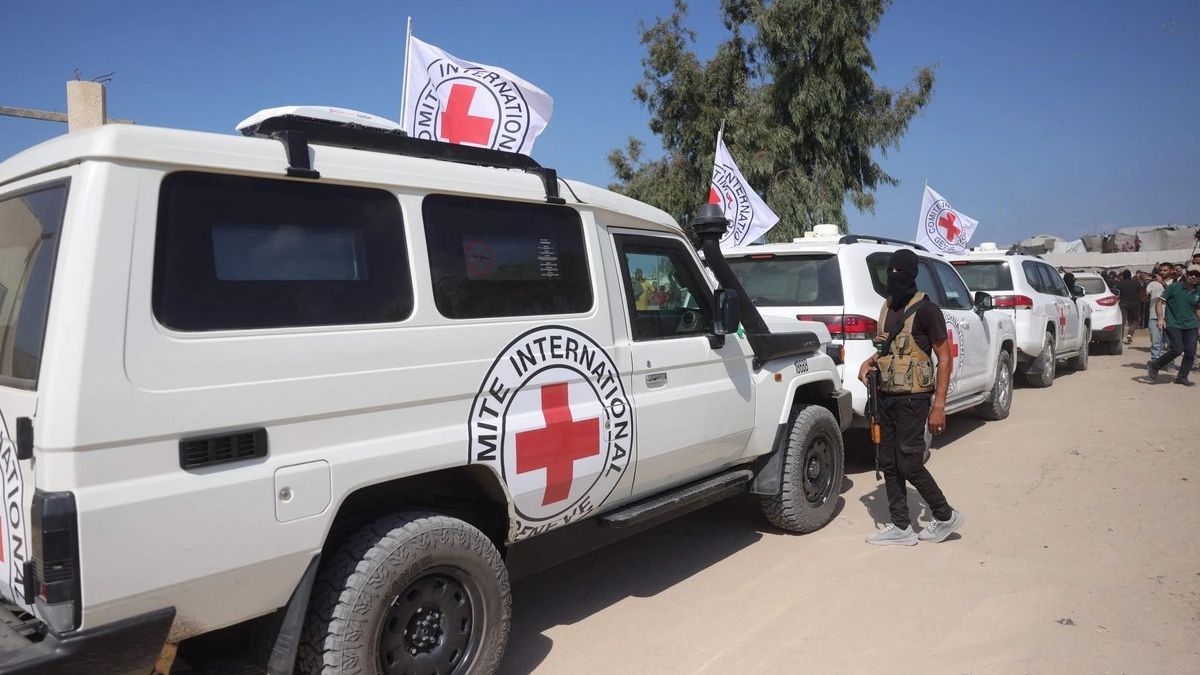The United States has been remarkably open in sharing its intelligence about possible Russian action against Ukraine. Just like Foreign Minister Antony Blinken. However, this “megaphone strategy” also has a disadvantage.
Is Russia actually withdrawing its troops from its border with Ukraine, as the Moscow Ministry of Defense says, or is the number of soldiers there being increased, as the US reports? “The troops can’t just float up and fly away. It takes time for that,” says Kremlin spokesman Dimitri Peskov. Military transports also exist in Crimea. Video material shows how, among other things, tanks are loaded onto trains and transported away. But there is no talk of relaxation. On the contrary.
troops from one maneuver to the next
NATO Secretary General Jens Stoltenberg said that the movement of troops and battle tanks does not prove that there is a real withdrawal. “They were always moving troops back and forth.” Similarly, military expert of the Russian newspaper “Novaya Gazeta”, which is critical of the Kremlin: It is not the case that the actions cannot be checked, but the question is “whether a new maneuver will not take place elsewhere afterwards – and very soon”.
And that is exactly what is happening. Russia has announced a ballistic missile exercise for Saturday, led by President Vladimir Putin. The aim is to test the strategic nuclear weapons for their reliability, as the Ministry of Defense says. However, Putin’s government always rejects accusations that the country is building a threatening scene, either with the argument that the movement of soldiers and military technology in its own country is nobody’s business. Or with the reference to regular exercises that would start and end according to the plan.
Playing with deception and truth, appearance and reality, lies and deceit has always been part of the political arsenal in times of crisis. The government in Washington has been warning of a so-called false flag attack in Ukraine for weeks. Before Moscow would attack Ukraine, it would create a pretext for it – such as an act of violence for which Ukraine would be held responsible.
Putin already speaks of “genocide”
Speaking to the UN Security Council, US Secretary of State Antony Blinken said Russia could order an attack on the neighboring country “in the coming days,” according to US intelligence services. He referred to fake news spread by Russian media alleging ethnic cleansing or “genocide” against Russian speakers in Ukraine. After his meeting with Chancellor Olaf Scholz, Putin also mentioned that a “genocide” was taking place in the east of the country. However, there is no evidence of this.
In an act of disarming frankness, Blinken played through a possible course of action by Russia according to the US assessment in front of the Security Council: Moscow will first create a “pretext for an attack”, an act of violence for which Ukraine is held responsible. This could be a fake “terrorist bomb attack” in Russia, the discovery of an alleged mass grave in Ukraine, a fake drone attack on civilians, or “a fake or even real attack with chemical weapons”. “Russia could describe this incident as ethnic cleansing or genocide,” the US Secretary of State continued.
“Theatrical performance of Russia”
In a second step, the Russian government would “theatrically convene in crisis meetings” and declare that Moscow must “defend Russian citizens or ethnic Russians in Ukraine,” according to US Secretary of State Blinken. Then the Russian attack will start – with missiles and airstrikes, cyber attacks and the advance of Russian soldiers and tanks on “key targets that have already been identified”. The Ukrainian capital Kiev could also be a destination.
In recent weeks, the US government has repeatedly publicly identified suspected Russian plans for an attack, including creating a pretext for an invasion. Washington is trying to prevent the Russian government from actually implementing such a plan. “If Russia does not invade Ukraine, then we will be relieved that Russia has changed course and contradicted our predictions,” Blinken said. “That would be a much better outcome than the course we are currently on.”
Surprise is actually an effective weapon, but detailed secret service information has been leaking to the public for more than three months. The unusual transparency has political and military calculations:
December 2021: US media are reporting on an intelligence report predicting a possible Russian military offensive in Ukraine in early 2022. After that, the Biden government expects an estimated 175,000 troops to be deployed. At this point, the Ukrainian Ministry of Defense is also warning of a “large-scale escalation” in January. An invasion is possible, but more likely “that they will provoke a crisis, get concessions from us and then resolve the crisis.”
Mid January 2022: US media refer to official information from the White House, according to which the secret services consider a Russian attack within the next 30 days to be realistic. There is a sharp increase in coordinated misinformation on social media via Russian-backed channels. With this, Putin wants to destabilize the Ukrainian government. The White House spokeswoman candidly claims that Russia has “prepared a group of agents for a false flag operation in eastern Ukraine.”
Beginning of February 2022: Once again, US secret services want to have found evidence of the Kremlin’s attempts at manipulation. A well-staged video shows the aftermath of an explosion. On display: dead and grieving Russians as well as military equipment belonging to Ukraine or its allies. “The video is being released to underscore a threat to Russia’s security and to underpin military operations,” said Ned Price, spokesman for the US State Department.
Mid-February 2022: According to the “”, government officials in several capitals agree that Russia is in the final stages of preparing for an invasion. According to analysts, the planned offensive could kill or wound up to 50,000 civilians and overthrow the Kiev government within two days. There is “a credible prospect that Russian military action could take place before the end of the Olympics,” national security adviser Jake Sullivan told the paper. There was even a specific date circulating for an invasion: Wednesday, February 16th.
The problem with the “megaphone strategy”
Anthony Faiola, columnist for the Washington Post, calls the ultra-transparent approach “Biden’s megaphone strategy”: Washington puts some of its cards on the table so that the international public can see for itself the danger posed by Russia. The radical openness has another advantage: it deprives Putin of the opportunity to act in the dark, according to Faiola. Because that would render the Russian plans – if they ever existed in this form – null and void. Not only does the Kremlin have to grapple with denying and discrediting US intelligence, but Moscow’s possible surprise advantage would be gone.
Like any tactic, Biden’s megaphone strategy has its downsides: releasing sensitive information can be dangerous for the sources and for further operations. Richard Gowan, an analyst at the International Crisis Group, told the Spanish newspaper El Pais: “Megaphone diplomacy could make it difficult for Putin to do nothing. But a humiliated Putin is a dangerous Putin.”
swell: DPA, AFP, “”, , “”, “”, Tagesschau
Source: Stern
David William is a talented author who has made a name for himself in the world of writing. He is a professional author who writes on a wide range of topics, from general interest to opinion news. David is currently working as a writer at 24 hours worlds where he brings his unique perspective and in-depth research to his articles, making them both informative and engaging.




